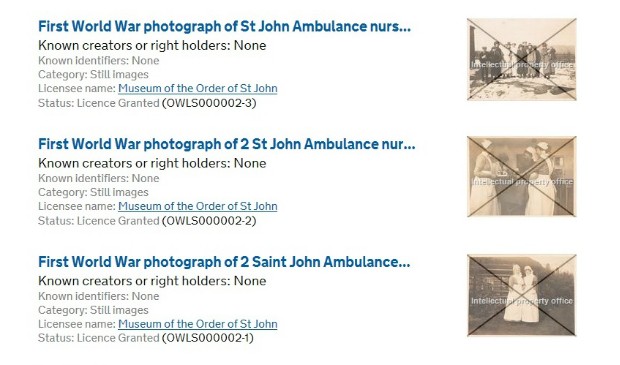
As part of our response to the 2011 Review of Copyright by Professor Ian Hargreaves, the Intellectual Property Office (IPO) decided to create a new, digital-only service.
The service will grant licences for the reproduction of orphan works – copyright works where the right holder is unknown or cannot be found.
The estimate in our impact assessment is that there are 91m orphan works in archives alone, but that is conservative, and does not include all of those in people’s attics or on the internet, for example. Allowing these works to be reproduced lawfully would open up new commercial opportunities as well as make the most of our cultural assets.
Our objective was to create a simple scheme for people to apply for these licences. The challenge was creating an application system on GOV.UK which covered every conceivable copyright work and every possible use that we could think of. For example:
- republishing crime novels from the 1920s and 1930s as ebooks
- creating a free online, interactive learning resource on nursing using photographs from the First World War
- making a TV advert including an orphan piece of music
- including photographs of the Greenham Common protests in an exhibition which charges an entrance fee
These are all real examples of applications for orphan works licences which have been made using the system we developed, and we have many more types of works and potential uses which have not yet been the subject of an application.
What we did
We obtained agreement from BIS and Government Digital Service (GDS) to develop the service in-house for a budget of £0.5 million and put a team in place, made up of permanent staff and contractors. The team developed and tested the product using the Agile methodology to complete work in sprints with reference to a product backlog. We passed the usual GDS beta assessment process.
We launched the service in beta on 29 October 2014, the same day as the regulations came into effect which support the scheme: we were on budget and on time.
How we went about it
Developing the IT system in parallel with the policy seemed the best solution because of time constraints. We used the Agile approach for the digital development, while continuing to have the normal management of secondary legislation and an overarching project board. Three management systems to handle!
Communication was obviously vital, with policy officials having to work closely with the Scrum team working on the system. We found that both sides were able to influence the other – policy clearly shaped the user requirements of the system being developed, but occasionally the developers would come across a technical issue which would help us refine the policy further.
We maintained stakeholder engagement throughout, using our contacts to develop operational guidance for the scheme as well as test the system as it was being developed. This provided useful insight for both the IT and policy officials.
The impact on the policy team
Members of the policy team had to learn to think in a different way: what did the policy mean for the end user of the scheme and how would they understand what to do? We were happy drafting policy explanations for our minister, for Parliament, and even for our stakeholders, but we had to explain this to IT developers who knew very little about copyright, as well as provide help for users of the scheme who might know even less.
The policy team also had to accept that not all of its requirements would be met: the most important thing was to get the ‘minimum viable product’ ready to launch. We used the MoSCoW prioritisation (Must, Should, Could and Would) so that all of our Musts were developed, and most of our Shoulds. We will think about all the bells and whistles at a later date when more user feedback can be gathered.
But overall, we were incredibly impressed with the way in which the system was developed, and the high quality of the work. Our users to date have commented on how easy the system is to use, and we have only had to make small tweaks to the system in beta. We continue to collect feedback and carry out usability testing which will help us improve the service and prepare for our live assessment.
The development of the orphan works licensing scheme was very much a balancing of needs between policy, digital development, delivery and project management – as well as financial input and a strong communications strategy. Sometimes I wonder how we juggled it all, but the proof of the pudding is in the eating and at the time of writing, we have had applications covering over 230 individual orphan works.
Margaret Haig
Service Delivery Manager, Orphan works licensing scheme, IPO
Stay up-to-date by signing up for email alerts from this blog.
2 comments
Comment by Nick Munn posted on
I'm really pleased to see Margaret's write-up of this project, which I was involved with in a previous role.
The three main things I learned from it were around:
- Pace: It is possible (though challenging) to develop IT and policy in parallel.
- Process: Agile project management operates much, much better with policy uncertainty than Prince2 / Waterfall.
- Openness: Building an active community of expert stakeholders was key; openness helped them and us get closer to what we wanted.
Do ask Margaret and the team how they did it!
Comment by Stuart Parsons posted on
Agree with Nick, Agile will help mature the policy, increase its chance of completeness and change mindsets to gain agreement. As long as buy-in and transparency are consistent you have a better chance of success!